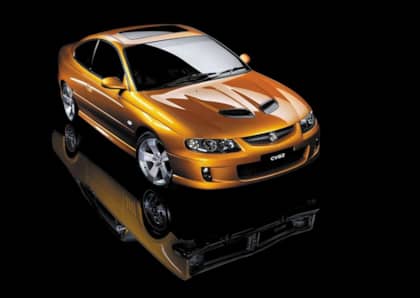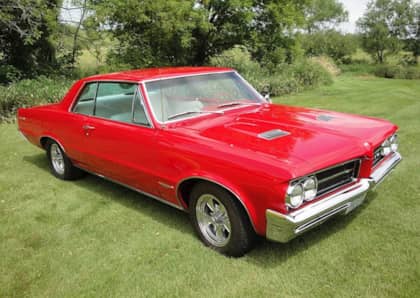GM's Quad 4 Engine Was a High-Tech Light at the End of a Long, Long Tunnel
General Motors had a rough track record with technological progress in the 1980s. Everything from the X-body failure, to the diesel disaster, to the inability to match encroaching Japanese rivals in fuel economy or features had GM struggling to catch up in terms of tech for most of the decade.
One of the few bright spots for the General during those dark times was the Quad 4. This unassuming four-cylinder engine marked the first time in a long, long stretch where Detroit's once-proud behemoth tackled a ground-up design that didn't result in a cavalcade of angry customers, massive recalls or lawsuits from the federal government. The Quad 4 might not have been perfect, but it brought several advanced ideas to the market in a format that slowly nudged GM towards the future of modern drivetrain engineering.
Forward-Thinking Tech
From a modern perspective, the Quad 4 isn't very flashy. At the time it was conceived, however, it was a moonshot for a company still smarting from a string of very public pie-in-the-face moments that had cost it tens of millions of dollars and major market share that it would never recover.
The key to the Quad 4's name was its use of four valves for each of the four cylinders, matching with a dual overhead cam. This was a first for GM, and it allowed for reasonable power to be squeezed out of a small displacement engine, putting to bed the wheezy four-cylinders that had long lurked in the General Motors portfolio. The cylinder head was an aluminum design, and a number of other aluminum parts were used inside the setup, which rested on an iron block.
A 16-valve DOHC design wasn't the only new concept explored in the Quad 4. The engine eschewed a distributor in favor of an ignition system that used the crankshaft position to fire one of two engine coils installed above the cylinder head itself. It was a simpler design that pointed the way to the coil-on-plug systems found today.
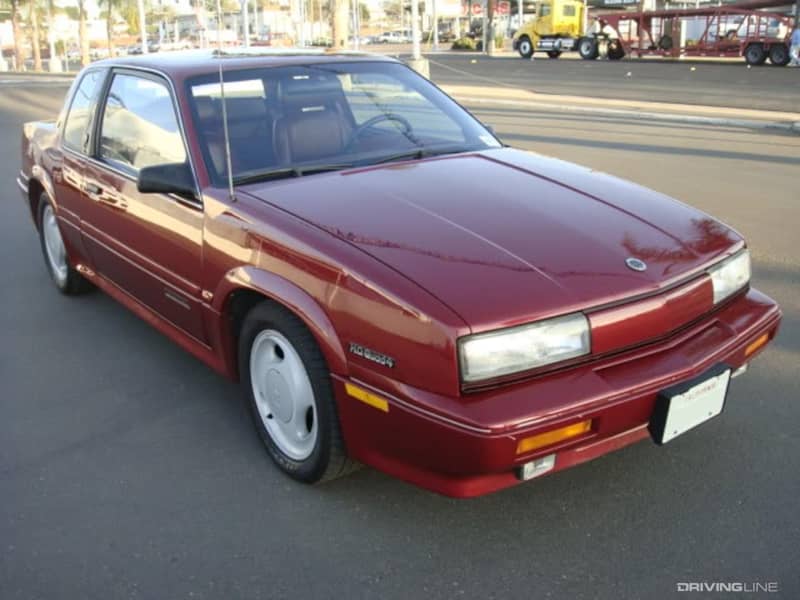
There were two versions of the Quad 4 in common usage. The first, which debuted under the hood of the 1988 Oldsmobile Cutlass Calais after five years of development, produced 150hp and 160 lb-ft of torque from 2.3L, with a redline of 7,000 rpm. The second was a High Output version that offered 180hp thanks to a higher compression ratio and better breathing. It arrived two years later.
Gradual Progress
The Quad 4 was eventually expanded to include Pontiac, Buick and Chevrolet models. A heavily modified version of the engine also powered the Oldsmobile Aerotech landspeed record car as part of a publicity program. The street motor was more powerful than several larger V6s in the GM stable at the time and was much more frugal than the dinosaur designs that were commonplace during Detroit's '80s period.
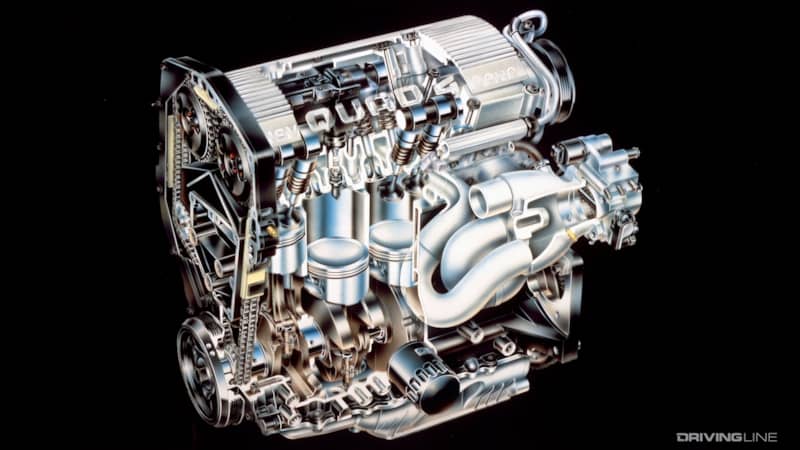
All was not perfect in Quad 4 land, however. Initial complaints focused on the noisy, thrashy nature of the four-cylinder when pushed hard, a result of there being no balance shafts included in the original design. Instead, lightweight reciprocating mass components were substituted in an effort to quell vibration. GM would eventually allow its engineers to triumph over its accountants, but it took a long time: It would be 1995 before balance shafts were added.
Other improvements made to the motor during this period included a new oil pan, crankshafts, connecting rods and engine mounts, all in a bid to deal not just with harsh operation but also head and oiling problems. With these changes came more power: 160hp for the standard LD2 version of the Quad 4 by 1990, but then a 10 pony drop once balance shafts arrived on the scene. A 190hp high-output variant called the W41 saw limited use in the Cutlass Calais (1991) and Oldsmobile Achieva SCX (1992-1993).
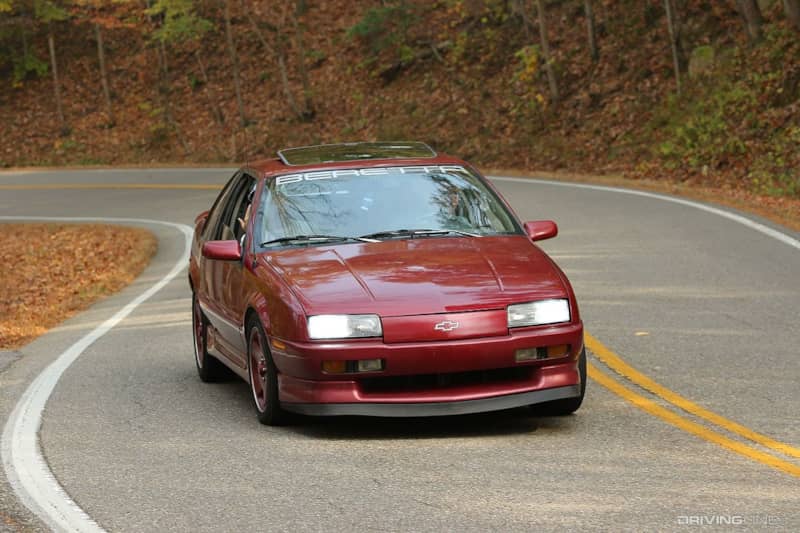
For 1996, a larger 2.4L four-cylinder dubbed the Twin Cam hit the scene. Horsepower for this rebranded Quad 4 remained at 150, and almost all of the earlier engine's problems had been dealt with (although timing chains and water pumps continued to be an issue). The engine would power the next generation of small and medium-sized GM automobiles until it was replaced by the EcoTec four-cylinder shortly after the turn of the new Millennium.
Better Late Than Never
For all the good that the Quad 4 brought to GM's ailing engine line-up, it's important to point out that while it was an internal revolution for the automaker, it didn't exactly peg the needle on a global basis. Twin-cam, 16-valve engines weren't a new concept when General Motors introduced theirs, and in many ways the motor came late to the small car party.
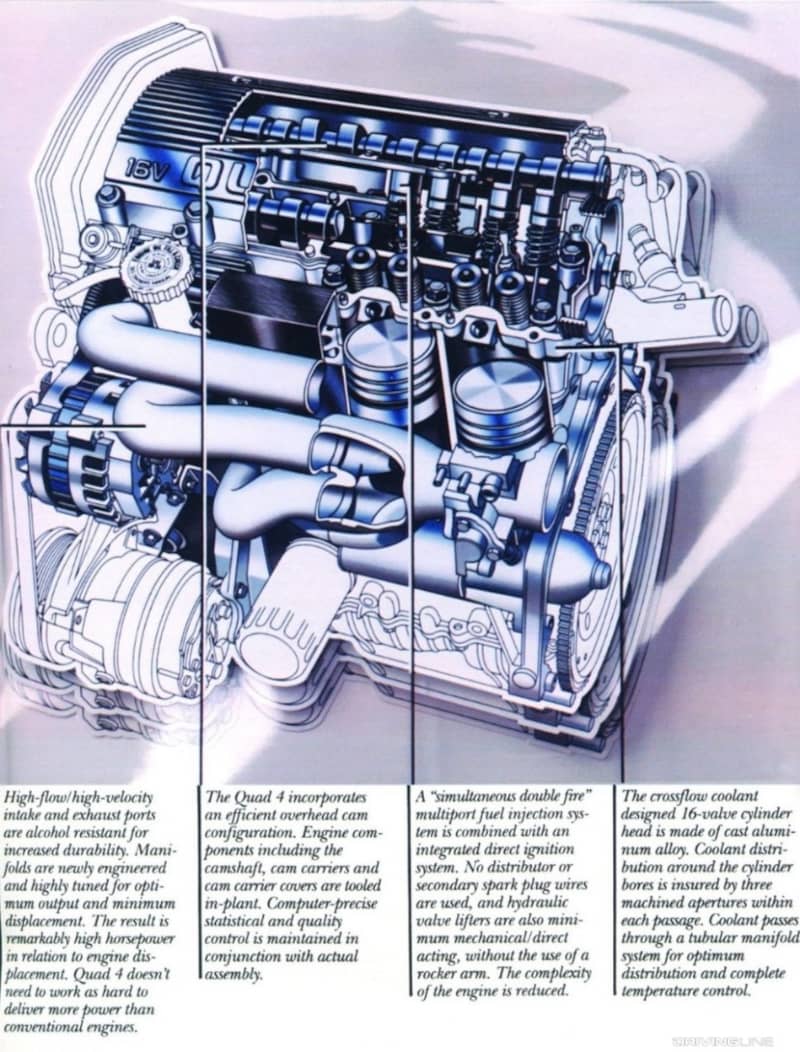
It's a charge that could also be leveled at the EcoTec, an excellent engine that proved GM finally understood what was necessary to be truly competitive at the entry level. If only the Quad 4 had come out five years sooner—or the EcoTec arrived in the mid-'90s to replace it, rather than waiting for post-2000—there may have been a chance for the company to generate buzz around its compact vehicles where once there had been only vitriol.
Instead, these two high tech motors achieve only internal milestone status and have us wondering what might have been if the giant's gaze had shifted away from large displacement, emissions-choked gas guzzlers a decade before the brand began its slow fade from industry leadership.






